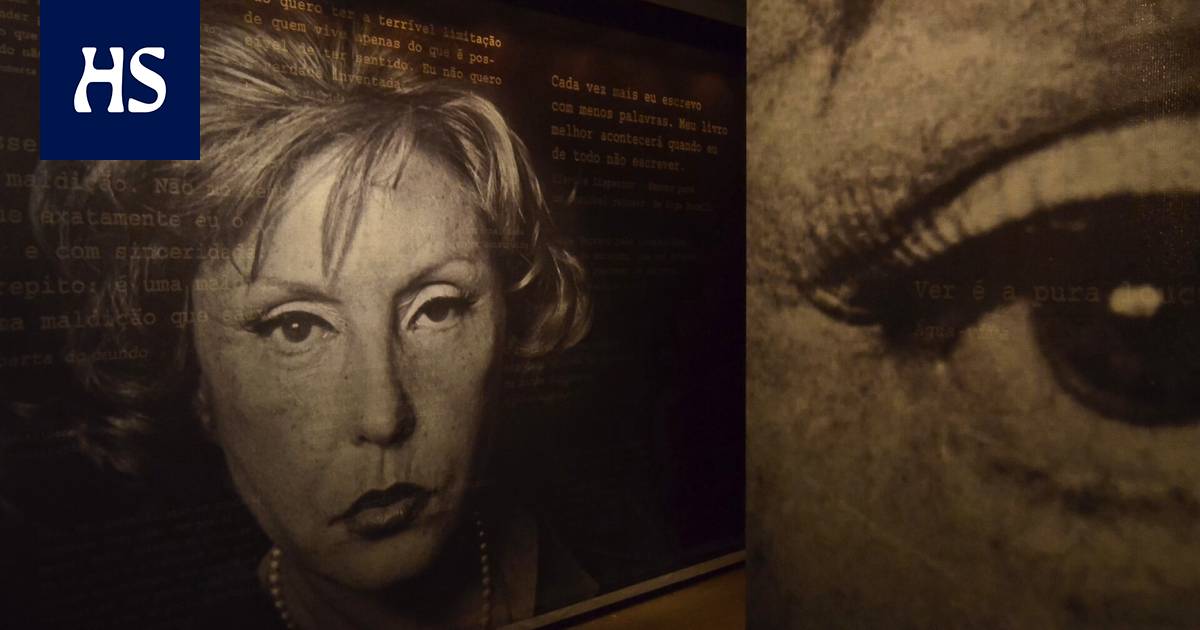Culture|Book review
The sixth Clarice Lispector translation is the guaranteed work of Tarja Härkönen.
Novel
Clarice Lispector: Breath of Life (Um Sopro de Vida). Finnish Tarja Härkönen. Work. 180 p.
Gustave Flaubert said that the writer is in his work as God is in his creation. A similar comparison is presented Clarice Lispector (1925–1977) in his posthumously published novel The breath of life.
A male writer uses his “breath” to create a woman named Angela Pralini as a character in his text. At the same time, he is a character himself, born from the breath of Clarice Lispector.
That Lispector did The breath of life From the author to a man, it may have been a conscious distancing trick, an attempt to mask the personal nature of the work.
Translator Tarja Härkönen writes in his afterwords that he gets annoyed when critics frankly equate the author with his characters. In the breath of life however, in Härkönen’s opinion, there are strong reasons to read the text against Lispector’s life and thinking, because it stirs autobiographical connections.
Lispector began write The breath of life 1974 after falling ill with ovarian cancer, from which she died three years later. Lispector’s assistant Olga Borelli compiled the fragments created in a notebook after the author’s death into publication condition.
Härkönen characterizes The breath of life into a swan song, in which the deeply guarded Lispector says directly what he thinks about themes that are important to him, such as art, language, time, reality, life, God.
According to the old hokema, fiction describes being human. The breath of life could be characterized as a novel about being mortal.
The work is structured in the form of a dialogue, but the Author and Angela talk to each other rather than to each other. The parts of both represent notes as a type of text, the impression of dialogicity arises mainly from the succession of text fragments.
According to the author, Angela is on the verge of death, “in constant danger of her life”. Sometimes he feels the need to protect Angela from unpleasant information, sometimes the need to save her from destruction.
Should he use his power as a writer? But he is only the god of his text in name, like Angela he is just the breath of life.
Clarice Lispector in 1969, a few years before her cancer diagnosis.
The gaze turns To Lispector himself. The breath of life the true author is flesh and blood, and therefore must return to the nothingness from which he has become. His characters just disappear from view at the end of the book.
“I almost already know what it will be like after my death. An empty living room, a dying dog. The stained glass windows of my home. All empty and calm.”
This is how Angela describes her final thoughts in words written by Lispector as a cancer patient in the waiting room of death.
The breath of life the tragedy is that it is fiction as it is, a fictitious description of the lives of fictitious persons, but you only need to sharpen your senses a little to feel how the text exudes the worry and anxiety of a mortal, but also hope and trust, even in all its absurdity.
Throughout its production Lispector wrote not only about people but also about animals. So it is not surprising that the Author writes Angela a dog named Ulisses. The Writer feels jealous when Angela cuddles the dog with such devotion that she forgets to be grateful to the Writer for inventing her.
“He just ‘is’. ‘Being’ is his job,” Angela writes about the dog. Animals are not haunted by the burden of self-awareness, the age-old problem of humans. They have a natural connection to cosmic existence, a kind of state of grace.
About God, too, Lispector writes with familiar turns of phrase from his earlier works. In the one published in Finnish four years ago Study timein the novel, the main character Lóri feels that God encompasses the entire universe with the Milky Way.
Angela feels the same way. God is neither at the beginning nor at the end, but in the middle of everything, everything that exists pulsates with God. Such thoughts make you cringe Baruch Spinoza effect.
From the breath of life rises from between the lines, and sometimes directly from the lines, the fear that literature in its totality can be a threat to real life, even an enemy.
The desperate can throw themselves on it, but it won’t necessarily accept it, support it. Literature is a play life where play deaths happen, and so saving can only be play saving.
“Writing can make a person crazy. He has to live a quiet life, a nice, really middle-class one. Otherwise there will be madness. It is dangerous.”
The breath of life is the sixth translated work from Lispector, one of the great names in Latin American literature. Tarja Härkönen is behind all of them, and as in the previous ones, she also interprets Lispector’s vivid prose into the Finnish language in the latest one.
Statue of author Clarice Lispector on Leme Beach in Rio de Janeiro, Brazil. The photo was taken in November 2016, at the dawn of the Brazilian summer. Ukrainian-born Lispector died in Rio de Janeiro on December 9, 1977.
#Book #Review #Clarice #Lispector #cancer #wrote #mortality









